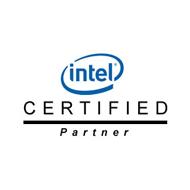-
Din varukorg är tom inkl. moms
1 819 kr
Ej i centrallager
- Mjukvara
- Operativsystem
Microsoft Windows Server Standard Edition - Mjukvaruförsäkring - 1 server - extra produkt, 1 år inköpt år 3 - MOLP: Open Value - Nivå D
P73-02828
Windows Server builds on the award-winning foundation of Windows Server,
expanding existing technology and adding new features to enable IT professionals to increase the reliability and flexibility of their server infrastructures. New virtualization tools, Web resources, management enhancements, and exciting Windows 7 integration help save time, reduce costs, and provide a platform for a dynamic and efficiently managed data center. Powerful tools such as Internet Information Services (IIS) version 7.5, updated Server Manager and Hyper-V platforms and Windows PowerShell version 2.0 combine to give customers greater control, increased efficiency and the ability to react to front-line business needs faster than ever before.
Windows Server includes many enhancements that make this release the most robust
Windows Server Web application platform yet. It offers an updated Web server role, Internet Information Services (IIS) 7.5, and greater support for .NET on Server Core. Design goals for IIS 7.5 concentrated on improvements that enable Web administrators to more easily deploy and manage Web applications that increase both reliability and scalability. Additionally, IIS 7.5 has streamlined management capabilities and provides more ways to customize your Web serving environment. The following improvements to IIS and the Windows Web platform are included in Windows Server:
- Reduced Effort to Administer and Support Web-Based Applications;
- Reduced Support and Troubleshooting Effort;
- Improved File-Transfer Services;
- Ability to Extend Functionality and Features;
- Improved .NET Support;
- Improved Application Pool Security;
- IIS.NET Community Portal;
- Learn more about the Web Application Platform in Windows Sever.
Virtualization is a major part of today’s data centers. The operating efficiencies offered by
virtualization allow organizations to dramatically reduce operational effort and power consumption. Windows Server provides the following virtualization types: Client and Server virtualization provided by Hyper-V and Presentation virtualization with Remote Desktop Services.
Windows Server introduces a new version of Hyper-V. Hyper-V in Windows Server includes a number of core areas of improvement for creating dynamic virtual data centers including increased availability and performance, improved management, simplified methods for deployment and new features including live migration.
Remote Desktop Services provides users and administrators with both the features and the
flexibility necessary to build the most robust access experience in any deployment scenario. To expand the Remote Desktop Services feature set, Microsoft has been investing in the Virtual Desktop Infrastructure, also known as VDI. VDI is a centralized desktop delivery architecture, which enables Windows and other desktop environments to run and be managed in virtual machines on a centralized server.
The ongoing management of servers in the data center is one of the most time-consuming tasks
facing IT professionals today. Any management strategy you deploy must support the management of both your physical and virtual environments. To help with this problem, Windows Server has new features to reduce the ongoing management of Windows Server and to reduce the administrative effort for common day-to-day operational tasks. These include:
- Improved data center power consumption management;
- Improved Management of File Services;
- Improved remote administration;
- Reduced administrative effort for administrative tasks performed interactively;
- Enhanced command-line and automated management by using PowerShell version 2.0;
- Improved identity management;
- Improved compliance with established standards and best practices;
- Learn more about Improving Power Management and Streamlining Management in Windows Sever.
Windows Server is capable of unprecedented workload size, dynamic scalability, and
across-the-board availability and reliability. A host of new and updated features will be available, including leveraging sophisticated CPU architectures, increased operating system componentization, and improved performance and scalability for applications and services.
Windows Server has many features that are designed specifically to work with client
computers running Windows 7. Windows 7 is the next version of the Windows client operating system from Microsoft. Features that are only available when running Windows 7 client computers with server computers running Windows Server include:
- Simplified remote connectivity for corporate computers by using the DirectAccess feature;
- Secured remote connectivity for private and public computers;
- Improved performance for branch offices;
- Improved security for branch offices;
- Improved virtualized desktop integration;
- Higher fault tolerance for connectivity between sites;
- Learn more about Making the Ex
Vill du tipsa någon om den här produkten? Skicka en länk via formuläret nedan.





